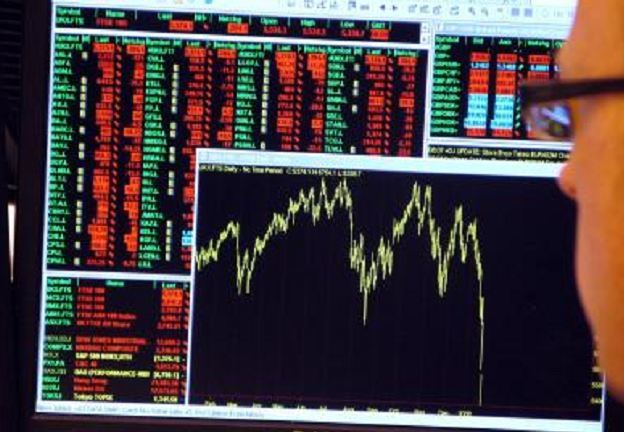
Brent oil traded near $28 a barrel as it extended declines after international sanctions on Iran were lifted, paving the way for increased exports from the OPEC producer amid a global glut.
Futures lost as much as 4.4 percent in London, slipping to the lowest since November 2003. Iran is beginning efforts to boost output and exports by 500,000 barrels a day now that restrictions have been lifted, Amir Hossein Zamaninia, deputy oil minister for commerce and international affairs, said Sunday. Saudi Arabia’s Oil Minister Ali al-Naimi said prices will rise, and that market forces and cooperation among producing nations will lead to stability.
“There is ongoing negative pressure on oil prices from oversupply,” Ric Spooner, a chief analyst at CMC Markets in Sydney, said by phone. “Iran is not new, but we’ve arrived now at the point where sanctions have been removed and it’s going to be a key focus for the markets over coming weeks. The question is how much supply can come online in the short-term.”
Brent capped a third annual loss in 2015 as the Organization of Petroleum Exporting Countries effectively abandoned output limits amid a global surplus. Iran, which was OPEC’s second-biggest producer before sanctions were intensified in 2012, is trying to regain its lost market share and doesn’t intend to pressure prices with an export increase, officials from its petroleum ministry and national oil company said this month.
Brent for March settlement fell as much as $1.27 to $27.67 a barrel on the London-based ICE Futures Europe exchange and was at $28.62 at 1:16 p.m. Hong Kong time. Front-month prices declined 13.7 percent last week for a third weekly drop. The European benchmark crude was at a discount of $1.52 to West Texas Intermediate for March.
Nuclear Program
WTI for February delivery fell as much as $1.06, or 3.6 percent, to $28.36 a barrel on the New York Mercantile Exchange. The contract slid $1.78 to $29.42 on Friday. Total volume traded was more than three times the 100-day average. Prices have lost 21 percent this year.
Buyers of Iranian crude are free to import as much of its oil as they want after the International Atomic Energy Agency determined that the country had curbed its ability to develop a nuclear weapon. As holder of the world’s fourth-largest reserves of crude and biggest deposits of natural gas, the nation gains immediate access to about $50 billion in frozen accounts overseas, funds the government says it will use to rebuild industries.
“Uncertainty remains regarding how much oil Iran can bring on in the short term as well as their re-entry strategy,” Victor Shum, a vice president for Asia Pacific at IHS Inc., said by e- mail from Singapore Sunday. “Export levels could feasibly ramp up quite quickly due to releasing this pent-up supply.”
Iran Output
The Persian Gulf nation will only be able to increase oil production by 100,000 barrels a day, or 3.7 percent, a month after sanctions are lifted and by 400,000 in six months, according to the median estimate of 12 analysts and economists surveyed by Bloomberg. Iran is the fifth biggest OPEC producer.
Saudi Oil Minister Al-Naimi declined to comment Sunday when asked how the removal of economic sanctions against Iran might affect prices. The kingdom is the world’s biggest crude exporter, pumping 10.25 million barrels a day in December, according to data compiled by Bloomberg.
Hedge funds last week increased bearish oil wagers to a record as global equities fell and sanctions on Iran were poised to be lifted. Speculators’ short position in WTI rose 15 percent in the period ended Jan. 12, data from the U.S. Commodity Futures Trading Commission show. It’s the highest in records dating back to 2006. Net-long positions fell to the lowest in more than five years.
“Iran’s additional crude shipments have the potential to further depress prices, perhaps to as low as $25 a barrel,” Gordon Kwan, a Hong Kong-based analyst at Nomura Holdings Inc., said by e-mail Sunday.
